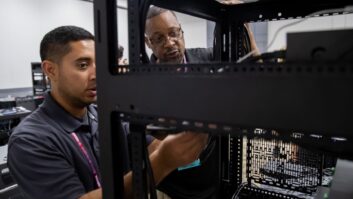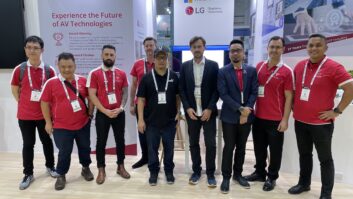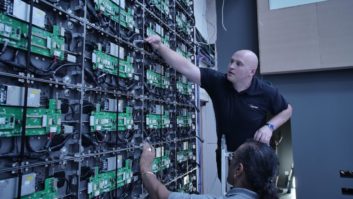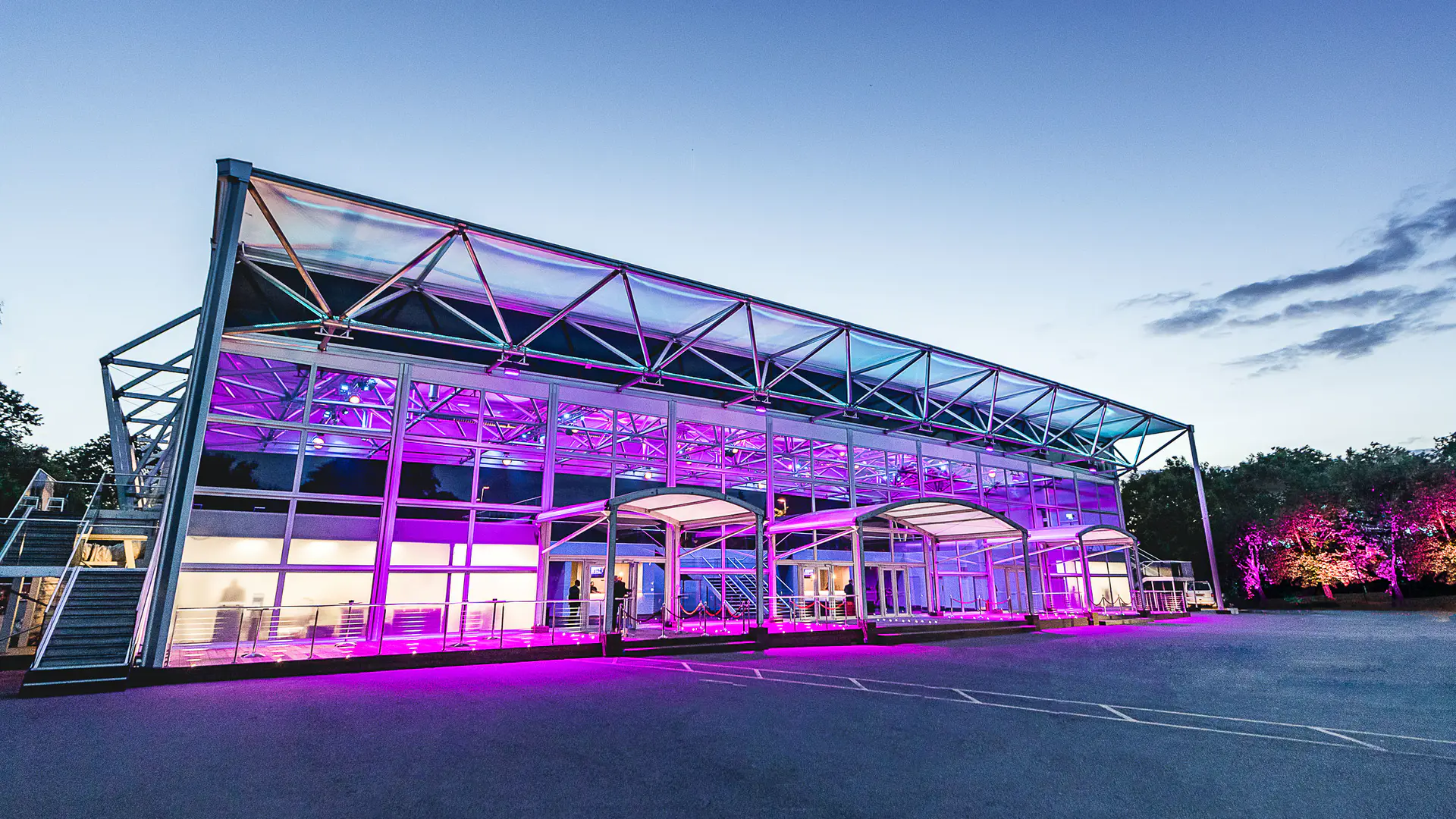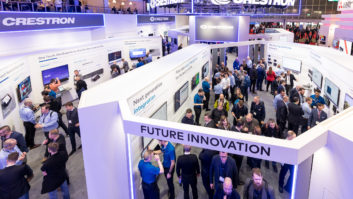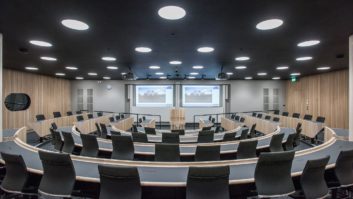In this first part of this feature we outlined what the latest training offerings involve, and looked at it from the perspective of the manufacturer and integrator. Here Ian McMurray examines the importance of training in terms of relationships between manufacturers and integrators/resellers as well as providing an opportunity to gain competitive advantage.
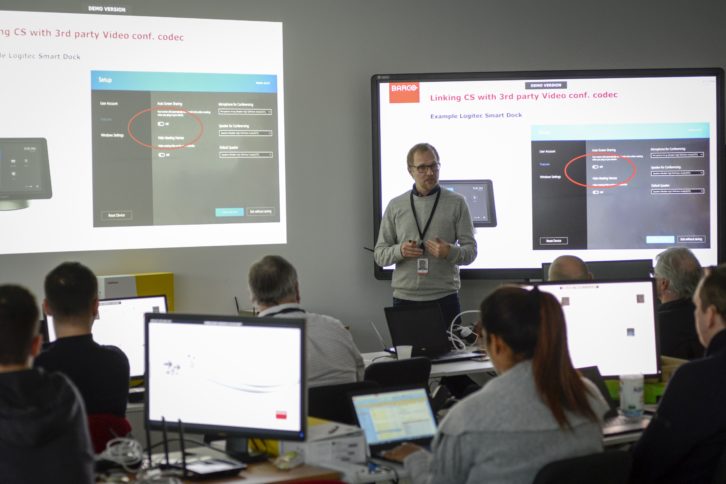
Training achieves more than the simple transfer of knowledge – a point made by many.
“From my perspective it’s absolutely mandatory to provide training to keep resellers and partners up to date,” says Daniel Buss, team lead, product and technical support at Bose EMEA. “A training session will also build relationships between Bose employees and Bose resellers. A good relationship can also be a part of successful selling. We actively promote training as an integral part of becoming a Bose reseller, so being part of the Bose ‘family’ is appreciated by many resellers and cements those relationships.”
“Most manufacturers offer a broader approach to training,” states Iffat Chaudhry, bid manager at CDEC. “They are usually happy to come into our offices and run familiarisation sessions with our staff, to join us at client meetings, and to support client demonstrations of their products. All of these activities support the development of a strong, positive working relationship, and by default lend themselves to incidental training opportunities.”
“By supporting our partners and customers with training, it builds relationships,” says Ross Noonan, technical product specialist at Optoma. “Also by training customers with our products they are more likely to spec these into future projects.”
Building relationships is, of course, vital in any manufacturer/reseller partnership, and training provides an important vehicle for consolidating them. But, as Noonan implies, training also provides the opportunity for competitive advantage: if you understand a product well, and where it fits, you have greater confidence in proposing it.
“If we are to be successful with our partners, we need to ensure they have the confidence to explore new opportunities with customers and see Signagelive as their partner to deliver a successful digital signage solution,” believes Jason Cremins, CEO of Signagelive. “Without an appropriate level of training, we would be nothing more than a SKU on a price list.”
“Having the knowledge is key,” says Piet Vandenheede, who is director of global product training, Barco University. “You have a competitive advantage if you can prove you are fully confident and competent with the Barco offering. We issue certification after the successful completion of training to confirm this strength.”
“Training absolutely delivers a competitive advantage,” adds Stuart Davidson, who is technical services director at AVMI. “We never underestimate the value of continuous training. In addition to the commercial benefits that can be gained by achieving accreditations, it is essential we remain at the leading edge of technology and market trends in order to provide our customers with the best possible advice, and the most successful projects.”
“Being accredited in particular areas has undoubtedly been a factor in securing contracts,” echoes Colin Etchells, group technical director at Visavvi.
And, increasingly for resellers, it’s not just about staying ahead of the competition – it’s also about staying ahead of end users, who are becoming increasingly tech-savvy.
“By training customers with our products they are more likely to spec these into future projects”
“Our training is designed to educate our resellers on what products are most suitable for which applications,” explains Noonan. “Often, end users will request products that are not actually what is needed for a given application. Our training ensures our channel sells the products that end users need – rather than what they might ask for.”
Holistic thinking
Helping end users arrive at the right solution is also at the heart of Logitech’s training. “One of our USPs is that our products are very easy to deploy, so in most cases deep dive product training isn’t necessary,” says Patrick Crowley, head of channel programs at Logitech EAMEA. “What our training does focus on, however, is advising the best product to suit a customer’s different meeting spaces. Our aim is to equip every meeting with the right solution, from smaller huddle rooms to larger meeting rooms and board rooms. We accordingly train our partners to approach a customer’s needs with holistic thinking, suggesting a product that will make the whole room work, considering everything from the windows to the light levels and acoustics.”
Whatever it comprises, the acid test with training, of course, is whether it is effective – but what’s the most effective way of measuring its effectiveness? How should it be measured?
Buss notes that Bose routinely asks for participant feedback immediately after a session. Barco uses the widely-accepted Kirkpatrick model of training effectiveness, in which level one checks the experience itself via an end of class survey (‘reaction’), and level two assesses the degree of learning via an examination that leads to certification (’learning’). Level three attempts to establish how well what was learned has been applied (‘behaviour’) – and level four establishes whether the training has led to better business outcomes (‘results’).
“We’ve implemented the first two levels,” notes Vandenheede, “and level three is performed on an ad hoc basis. We haven’t yet implemented level four.”
The latter is, of course, the ultimate test. “Success is ultimately measured in commercial success with the partner,” says Cremins. “However, the quality of the opportunities and depth of discovery from the channel partners provides us with a good indication as to whether the training has been successful and where we need to improve or increase the training required.”
“Providing we can see successful completion of projects, and of course project wins, we will continue to invest in training,” answers AVMI’s Davidson.
Room for more
Any discussion of training inevitably leads to its wider significance to the industry. While the channel clearly values what manufacturers offer, and manufacturers play a key role not only in training but also in education – there is still, Visavvi believes, room for more.
“We encourage and actively support AVIXA training for our people, combined with substantial manufacturer training,” says Etchells, “but we think that may not be enough. That’s resulted in Visavvi having initial discussions around setting up a dedicated training academy to encourage new recruits into the industry. There are no real dedicated courses or technical apprenticeships in audiovisual technologies available – and, increasingly, companies are having to try to entice applicants from the IT or electrical sector. This isn’t ideal. We feel there’s enough demand for technicians in the integration industry to consider the development of a more formal qualification, like the one embraced by the live events sector. If the industry is to grow and thrive, we need to develop strategies that are going to engage and encourage Generation X and Z to become part of it.”
With that caveat in mind, it becomes apparent that training is at the heart of the industry, and is making a substantial contribution to its success. Yes, manufacturers would like to offer more of it, and have more of the channel attend it. The channel unquestionably values what manufacturers provide – but it has limited resource, and time spent on training is time not spent selling or installing.
Support continuum
Its value goes beyond simple learning, with training providing a forum for deepened – and thus enhanced – relationships, as well as being a vital element within the ongoing manufacturer support continuum. The best training, it seems, includes elements that are not manufacturer-specific, on topics such as AVoIP and Dante – and also provides sales context in terms of prospect qualification, features/benefits and competitive advantages. In respect of the latter, what seems to be particularly valued is official manufacturer certification as a differentiator against a competing integrator who cannot formally demonstrate the same level of knowledge and understanding.
Training has become both more imperative – and far more challenging. For manufacturers and integrators alike, it’s fundamental to their business success. Just as it was to those young computer salesmen all those years ago.
www.avmi.com
www.barco.com
www.bose.com
www.cdec.co.uk
www.logitech.com
www.optoma.com
www.signagelive.com
www.visavvi.com
